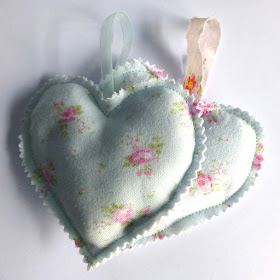Hygge, it seems, is not just about toasting your toes in hand-knitted socks before a log fire with your hands around a warm mug of frothy, hot chocolate in the light of an obligatory candle. That's only half of it. The toasting your toes bit is only properly hyggelig when you've spent some time outside, walking in the countryside, chopping logs or gardening, (or may be skiiing, if you live in Scandinavia).
It encourages us to get out there in the cold and be active outside, as well as to retreat inside and hunker down with a good book, a steaming mug of tea (and a candle).
The combination is a good recipe for these early months of the year, post-Christmas when it still feels such a long way from warmer, lighter days. January blues are a common phenomenon. I see that the third Monday in January has even acquired Official Depressed Status and is now being referred to as Blue Monday. Don't worry - we've past it; it was last Monday, not tomorrow!
The other reason I like the philosophy of hygge is that although, like any of these lifestyle recommendations, you can spend a fair bit of money equipping yourself with hyggelig trappings, it is essentially a homely philosophy that makes the most of ordinary things, ordinary contexts, ordinary days and you don't have to spend much at all to bring out the hygge in your life, despite some of the marketing hype that might persuade you otherwise.
Yes, it's cold outside, so, yes, you do need warm clothing and proper footwear if you're going to be outside for long. But they don't have to be new this year nor do they all have to match this season's colour-way.
Yes, it's nice to come in to a warm house after being out but you don't need to install an open fire or a wood stove to be cosy.
Yes, to earn its proper hygge status, what's on the table is ideally homemade, but it doesn't have to be complicated, in fact, for the Danes, it seems, if it's too complicated, it's not hygge. Hurray for simple!
Hygge seems to be as much about doing as spectating - and that appeals to me.
I've been trying to beat the January blues with the active part of hygge, aiming to walk early, every morning for 45 minutes or so and to get out and about at other times too. Nothing chills me down faster than working, hunched for hours over a computer screen, I find, so this, in part, is a functional strategy to keep my circulation active. But it's more than that - I just really love being out and being more active, even when it is bone-chillingly cold and to begin with, not remotely inviting.
There's a very inspiring article from a couple of years back by Alys Fowler, of Gardener's Question Time fame, on the joys of being outside in winter. You can read it here. It buoyed me up just to read it. So if you feel you too need a bit of encouragement to get your boots on, have a look.
But there's no doubt about it, that being outside in sub-zero temperatures (-8 C in Oxfordshire this morning) means something piping hot and inviting on the table when it comes to mealtimes is definitely de rigueur. Soup has always been prominent in my winter cooking repertoire - there's just something so comforting about a bowl of hot homemade soup and this year I've been making it even more than usual.
Here is one that has become my winter favourite this year. It makes a perfect lunch after a winter walk (you can leave the vegetables to roast while you're out) and is cheap and cheerful to boot. Here in the UK, fresh tomatoes are often a bit disappointing, especially in winter. I devised this to try and emulate that intense, tomato flavour you get far more often in the Mediterranean and I am pleased to report it was a blinding success. Sorry, that doesn't sound very modest, does it? But it was! It's a variation on a number of similar roast tomato soup recipes I found and then tweaked to my satisfaction. You may well have one that works equally well but here is my version, for what it's worth.
Roasted Tomato Soup - serves 4-6
What you need
c 2 kg large tomatoes - plum ones are good but not essential. Last time I used three 500g packs and a small bowl of leftover smaller ones that were beginning to look a bit sad so probably a bit less than 2 kg in total.
2 red peppers
1 onion
good, green olive oil
salt and black pepper
c 1.5 litres homemade vegetable stock or water - I have got into making my own vegetable stock as a regular thing - (very quick and easy in a pressure cooker) but plain water with some salt will be fine if stock-making isn't your thing. If using a commercial, powdered stock, make it up on the dilute side, otherwise it will overpower the fresh intensity of the tomato hit in this soup.
What you do
Halve the peppers, remove the stalks and inner cores with their seeds. Chop the flesh. Peel the onion and chop into chunks.
Drizzle some olive oil over the base of a large heavy cast iron casserole with a lid. Pile in the vegetables. Season with a bit of salt and pepper and another good drizzle of olive oil. Not too much oil - or the finished soup will be heavy.
Clap the lid on and put the casserole into the oven for a couple of hours. Remove the lid and roast uncovered for another half hour to 45 minutes to evaporate off some of the juices. Remove from the oven and allow to cool a bit. The vegetables should be meltingly soft and the juices concentrated but still present. This is what it should look like by the end of roasting:
Thin the resulting intense, thick, red, purée with c 1.5 litres of stock (or water) - the exact amount of stock you need will depend on how thick your tomato purée is and how thick you want the soup to be. Reheat on the hob.
Eat and survey the frost that remains outside, even though it's midday, with satisfaction!
Mine is a stainless steel one, as you can see, and it comes with two interchangeable milling discs, a coarse one and a finer one, which is what I generally use. It was quite expensive but it's excellent; I'd thoroughly recommend it, but you can buy much cheaper plastic ones, if you're more of an intermittent soup-maker. Amazon have a range here, if you want to browse some options.
The wonderful thing about the mouli is that it results in so little waste which, from both a nutritional and an economical point of view, is rather good news. See what I mean? This is all the debris that was left:
Cold, after being outside? You bet!
Piping hot soup, fresh off the hob, will do nicely, thank you very much!
E x
PS Thank you for your kind comments on my previous post welcoming me back after my unexpectedly long blogging absence - I appreciate them very much.


























